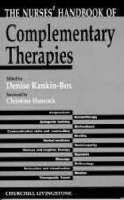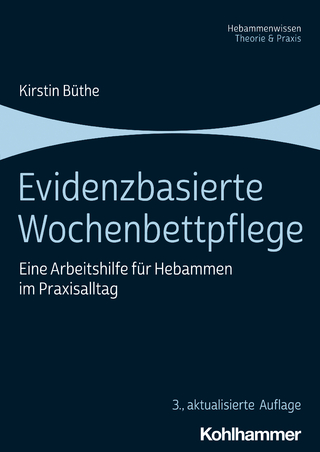
Nurse's Handbook of Complementary Therapies
Seiten
1995
Churchill Livingstone (Verlag)
978-0-443-05180-7 (ISBN)
Churchill Livingstone (Verlag)
978-0-443-05180-7 (ISBN)
- Titel erscheint in neuer Auflage
- Artikel merken
Zu diesem Artikel existiert eine Nachauflage
A practical guide to the application of complementary therapies in the work of nurses and midwives. This work covers practical, safety and legal issues, advice on training and details each main therapy, such as acupuncture and reflexology, from a nurse/midwife perspective.
The first section of this handbook identifies key areas that nurses should consider when attempting to successfully integrate complementary therapies into health care practice. These include choosing a therapy, managing change in the workplace, policy development and research issues to be aware of when critically evaluating or planning research studies. Section two of the handbook is designed as a guide to provide nurses with a concise, substantiated introduction to the complementary therapies most commonly used in nursing practice. Throughout the text, the implications for nursing practice are paramount, and each therapy identifies both indications and contraindications for use. The book is presented as a guide to key issues that are central in the debate concerning complementary therapies in nursing practice. The intention is to facilitate future studies and research. The book is designed to be a working text to be carried around, with at-a-glance boxes highlighting key issues and with some blank pages at the back for notes.
The first section of this handbook identifies key areas that nurses should consider when attempting to successfully integrate complementary therapies into health care practice. These include choosing a therapy, managing change in the workplace, policy development and research issues to be aware of when critically evaluating or planning research studies. Section two of the handbook is designed as a guide to provide nurses with a concise, substantiated introduction to the complementary therapies most commonly used in nursing practice. Throughout the text, the implications for nursing practice are paramount, and each therapy identifies both indications and contraindications for use. The book is presented as a guide to key issues that are central in the debate concerning complementary therapies in nursing practice. The intention is to facilitate future studies and research. The book is designed to be a working text to be carried around, with at-a-glance boxes highlighting key issues and with some blank pages at the back for notes.
Introduction SECTION 1: INTRODUCING COMPLEMENTARY THERAPIES in the WORKPLACE Choosing a Therapy. Managing Change in the Workplace. Policy Development. Research Issues SECTION 2: THERAPIES Acupuncture. Aromatherapy. Autogenic Training. Biofeedback. Communication Skills and Counselling. Healing. Herbal Medicine. Homoeopathy. Humour and Laughter Therapy. Hypnosis. Massage. Reflexology. Relaxation and Visualisation. Shiatsu. Therapeutic Touch Glossary. Addresses. Index
| Zusatzinfo | 1 ills. |
|---|---|
| Verlagsort | London |
| Sprache | englisch |
| Maße | 140 x 216 mm |
| Gewicht | 264 g |
| Themenwelt | Medizin / Pharmazie ► Allgemeines / Lexika |
| Medizin / Pharmazie ► Gesundheitsfachberufe ► Hebamme / Entbindungspfleger | |
| Medizin / Pharmazie ► Naturheilkunde | |
| Medizin / Pharmazie ► Pflege | |
| ISBN-10 | 0-443-05180-1 / 0443051801 |
| ISBN-13 | 978-0-443-05180-7 / 9780443051807 |
| Zustand | Neuware |
| Haben Sie eine Frage zum Produkt? |
Mehr entdecken
aus dem Bereich
aus dem Bereich
Evidenz und Erfahrung
Buch | Softcover (2024)
Springer (Verlag)
49,99 €
eine Arbeitshilfe für Hebammen im Praxisalltag
Buch | Softcover (2023)
Kohlhammer (Verlag)
42,00 €
Buch | Softcover (2023)
Urban & Fischer in Elsevier (Verlag)
36,00 €



